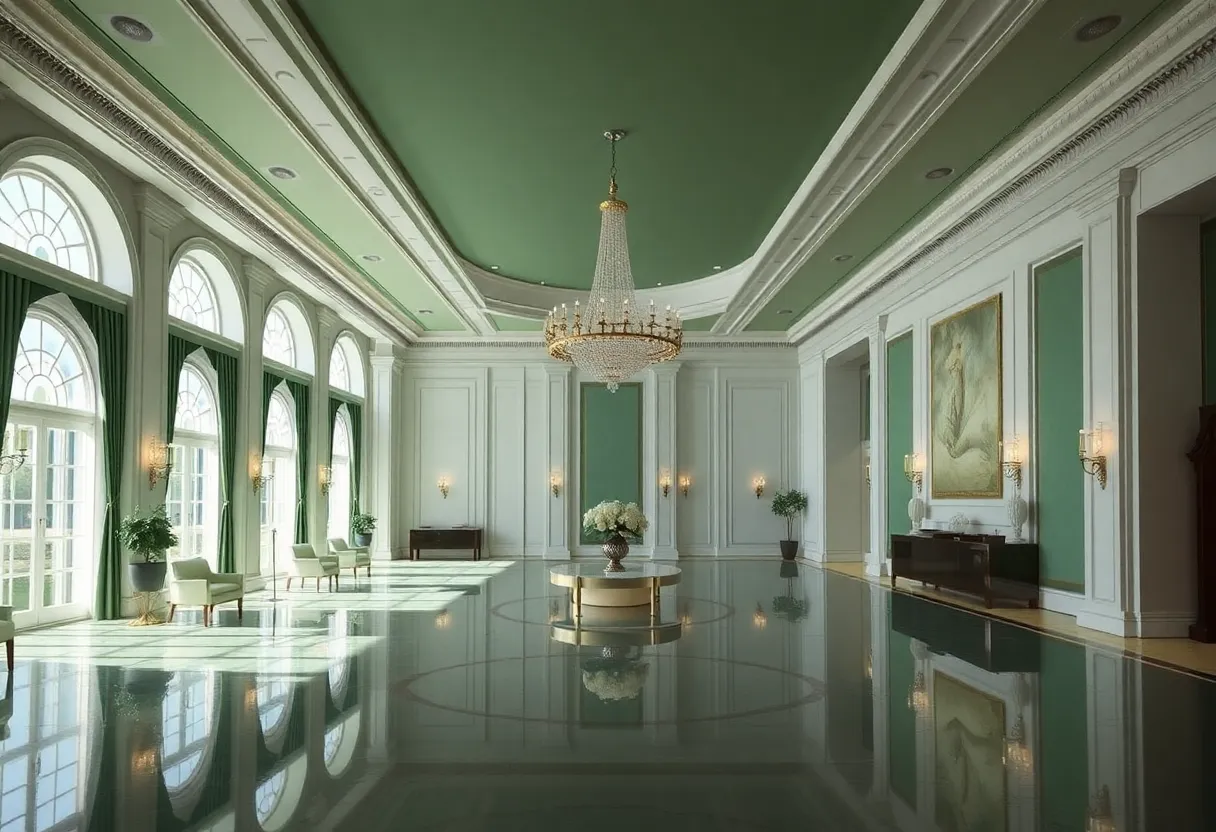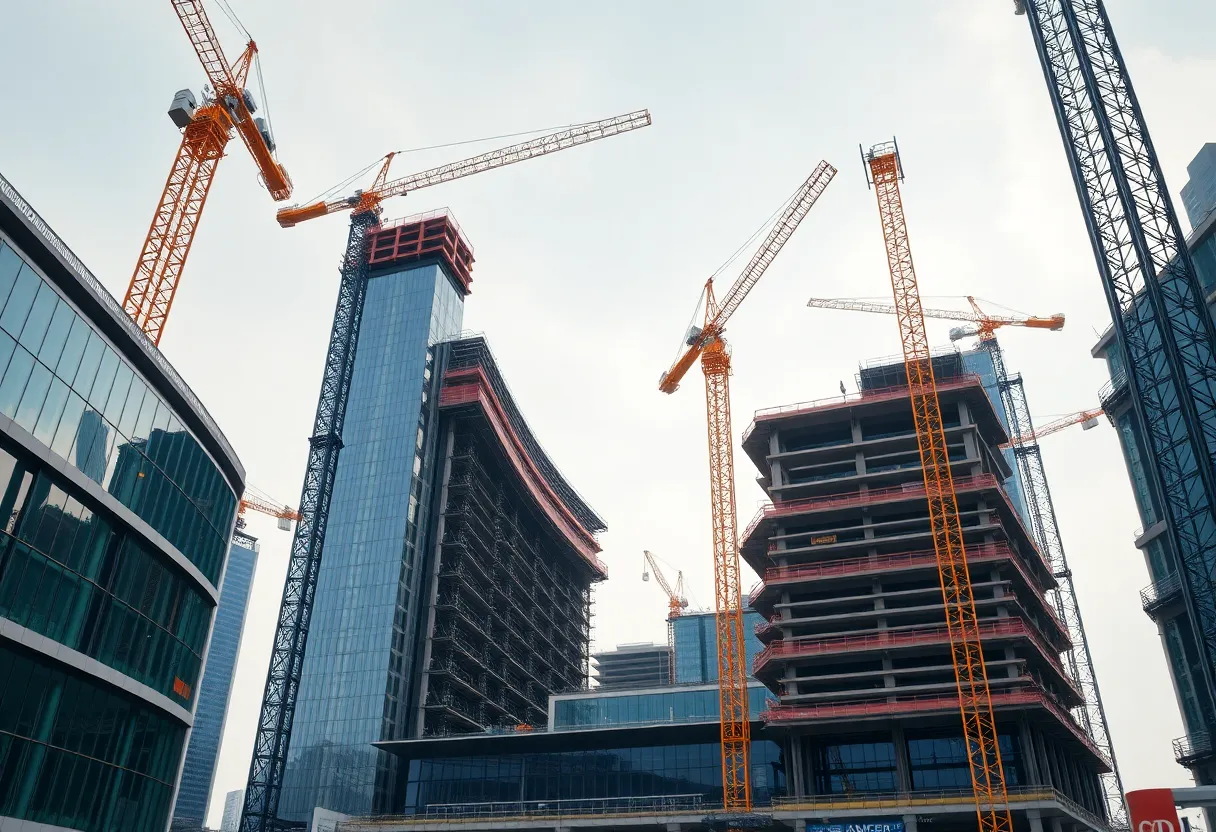News Summary
The White House is embarking on a $250 million construction of a new ballroom, set to seat 500 guests. The project, however, has ignited debates over historical preservation as it involves demolishing certain historic interiors. While leveraging green materials for sustainability, the construction has attracted criticism from historians concerned about its long-term impact on the cultural heritage of the iconic residence. As it progresses with security measures in place, discussions continue around balancing modernization with preservation.
Washington, D.C. – White House Ballroom Construction Underway Amid Controversy
In Washington, D.C., the White House is undergoing significant construction for a new $250 million ballroom, which involves demolishing historical interior spaces. This ambitious project reflects a vision to create an opulent addition that seats 500 people, rivaling the grandeur of historic estates. The initiative has sparked widespread debates on historical preservation, as it prioritizes modern expansion over longstanding architectural heritage.
The construction employs green materials to minimize environmental impact, aligning with efforts to make the project more sustainable. Funding for the ballroom comes from domestic sources, including contributions from anonymous tycoons, ensuring that the work is completed in time for inaugural events. Security measures are in place, with Marines guarding the sites to maintain safety and control during the ongoing work. Despite these precautions, the project has drawn criticism from historians, who argue that it overlooks the cultural significance of the affected areas. Exemptions from National Historic Landmark regulations have been granted to allow the demolition to proceed.
Details of the project reveal a focus on luxury and scale, with the new ballroom designed to accommodate large gatherings. The space, capable of seating 500, is intended to enhance the White House’s event-hosting capabilities. Construction teams are using innovative methods to integrate the new structure while incorporating the mentioned green materials, which help reduce the overall environmental footprint. This approach demonstrates an effort to balance modernization with ecological considerations, though it has not quelled concerns about the loss of historical elements.
Public discourse around the project includes social media activity, such as posts that mock opponents’ timelines, highlighting perceived delays in similar efforts. However, the core focus remains on the construction itself, which is progressing with a clear timeline aimed at completion for key events. The involvement of private donors underscores the project’s reliance on non-government funding, adding another layer to the ongoing discussions about its implications.
Historically, the White House has seen various modifications over the years, but this particular project stands out due to its scale and the demolition of established interiors. The decision to grant exemptions for the National Historic Landmark status has fueled debates, with critics pointing to potential long-term effects on the building’s legacy. Proponents, on the other hand, emphasize the benefits of the new space for future administrations. This construction represents a significant investment in updating the presidential residence, though it continues to provoke questions about preservation versus progress.
The use of green materials not only addresses environmental concerns but also sets a precedent for future projects at federal sites. The ballroom’s design draws comparisons to grand estates, positioning it as a symbol of prestige. As work advances, the project remains under scrutiny, with historians mounting criticism over the irreversible changes to the White House’s interior layout. Overall, this development illustrates the complexities of managing historical sites in a modern context, balancing innovation with tradition.
Completion of the ballroom is targeted for inaugural events, ensuring it becomes a focal point for high-profile gatherings. The anonymous tycoons funding the project have chosen to remain undisclosed, adding an element of mystery to the financial backing. Marine guards at the sites underscore the high-security nature of the operation, reflecting the sensitivity of altering a national icon. Despite these efforts, the broader implications for historical preservation continue to be a point of contention among experts and the public.
In summary, the White House ballroom construction in Washington, D.C., represents a major undertaking that combines luxury, sustainability, and controversy. With a budget of $250 million and features like seating for 500, the project advances amid debates on its impact on historical spaces.
Background on the Project
The White House, as a National Historic Landmark, has rarely seen such extensive interior changes. The current construction involves demolishing specific historical spaces to make way for the new ballroom, a decision facilitated by granted exemptions. This move has intensified discussions on how to protect cultural heritage while allowing for necessary updates. The project’s domestic funding and use of green materials highlight a commitment to modern standards, yet the criticisms from historians emphasize the challenges of preserving the past.
Word count: 652
FAQ Section
Frequently Asked Questions
- What is the cost of the White House ballroom?
The cost is $250 million. - What does the construction involve?
It involves demolishing historical spaces for the new ballroom. - How is the project funded?
It is funded domestically, with donors including anonymous tycoons. - What materials are used in the construction?
Construction employs green materials to lessen impact. - How many people can the ballroom seat?
The ball seats 500 people. - What exemptions have been granted?
National Historic Landmark exemptions have been granted. - What criticisms have arisen?
Criticism from historians mounts over the project. - When is the project expected to be completed?
Completion is for inaugural events.
Key Features Chart
| Feature | Description |
|---|---|
| Cost | $250 million |
| Construction Elements | Demolishing historical spaces; Employing green materials |
| Capacity | Seats 500 people |
| Funding | Funded domestically by anonymous tycoons |
| Completion Timeline | For inaugural events |
| Controversy | Provokes debates on preservation; Criticism from historians mounts |
| Exemptions | National Historic Landmark exemptions granted |
Deeper Dive: News & Info About This Topic
Construction FL Resources
U.S. Hotel Room Construction Falls to 10-Year Low Amid Economic Challenges
Demolition of White House East Wing for New Ballroom
Ongoing Demolition for Trump’s White House Ballroom Draws Scrutiny
White House East Wing Demolition Advances for Ballroom Project
Demolition Begins on White House East Wing for Ballroom Expansion
U.S. Construction Expansion Index Shows Steady Growth
Demolition and Renovation of White House Ballroom Underway
Demolition Underway at the White House East Wing
Demolition of White House East Wing Starts for New Ballroom
Demolition Begins on White House East Wing for New Ballroom
Author: Construction FL News
The FLORIDA STAFF WRITER represents the experienced team at constructionflnews.com, your go-to source for actionable local news and information in Florida and beyond. Specializing in "news you can use," we cover essential topics like product reviews for personal and business needs, local business directories, politics, real estate trends, neighborhood insights, and state news affecting the area—with deep expertise drawn from years of dedicated reporting and strong community input, including local press releases and business updates. We deliver top reporting on high-value events such as the Florida Build Expo, major infrastructure projects, and advancements in construction technology showcases. Our coverage extends to key organizations like the Associated Builders and Contractors of Florida and the Florida Home Builders Association, plus leading businesses in construction and legal services that power the local economy such as CMiC Global and Shutts & Bowen LLP. As part of the broader network, including constructioncanews.com, constructionnynews.com, and constructiontxnews.com, we provide comprehensive, credible insights into the dynamic construction landscape across multiple states.





